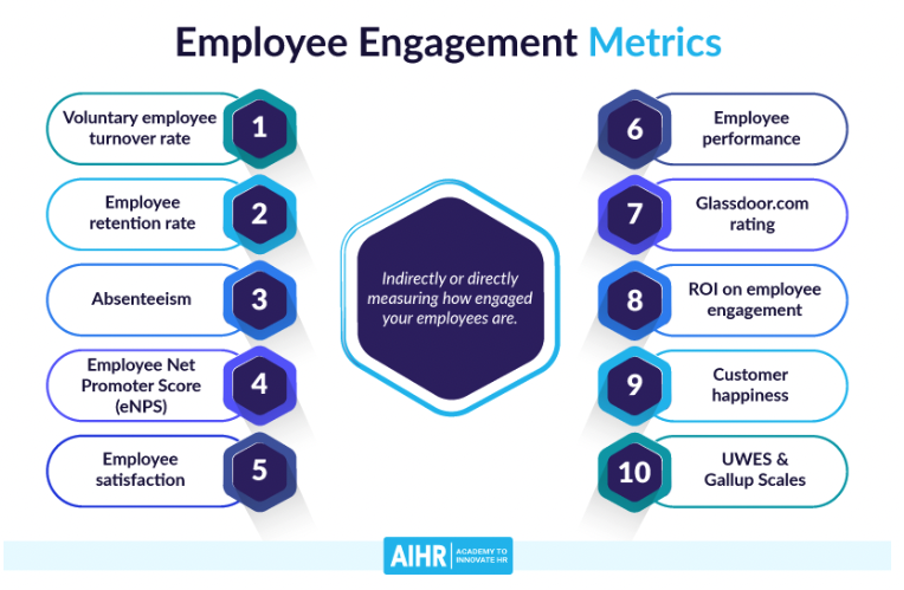11 Crucial KPIs and Metrics to Make Hybrid Work a Success
The post-pandemic workforce changed how managers measure employee performance and course-correct possible deviations from set guidelines. Financial KPIs that were the norm before 2020 have been replaced with metrics that leave more room for flexibility.
Companies must adjust to new ways of assessing performance to make hybrid work successful and keep both management and employees happy. Let's see how this can be done and what it takes to get there:
What are good KPIs for remote work?
Productivity is about how much you accomplish instead of how long you spend at your desk, especially in the post-pandemic workplace. The best KPIs that measure how effective an employee is, especially when working from home, follow the SMART framework - they are Specific, Measurable, Achievable, Relevant, and Timely.
Next, we will go through the main types of KPIs that govern both hybrid and remote work. Implement them in your business to correctly assess your workforce's effectiveness and measure progress each step of the way.
Hybrid work KPIs for internal communication
1. Average response time
This metric measures how fast a remote worker replies to an inquiry, letting you know how well they communicate with colleagues and clients. You can quickly tell if you have a communication problem with an employee by the feedback you receive from customers or simply by asking another employee to assess someone's communication skills.
Remember that a correct evaluation of average response time considers more metrics, like average task completion time or goal completion rate. Employees have adapted to the flexible work schedule and might not be available when you need them. This doesn't mean they are underperforming; if they continually put off important tasks, ignore tickets, or avoid conversations altogether, you should consider taking measures to fix the situation.
90% of customers think an immediate response to their query is essential. This tells you that a prompt response is crucial, even without an immediate satisfactory resolution. Until you figure out how to best tackle the issue they signal, you have to acknowledge the request and assure them work to correct it is underway - even if it may take some time.
2. Employee engagement in hybrid environments
An engaging workplace model is the right mix of physical and psychological resources. It's about interpersonal connections and providing employees with the right environment and tools to do their jobs.
Companies adapting to hybrid work are increasingly interested in creating a sustainable, smart workplace that provides autonomy, flexibility, and a sense of belonging. Here is how to achieve that without going over budget:
Regular one-on-one sessions;
Creative, virtual team buildings and digital meetings;
Online classes for skill development;
Flexible working hours;
Recognition and appreciation;
Regular feedback requests.
Below are some examples of employee engagement metrics you may take into consideration, but remember that every organization will handle engagement measurement differently, and it is more important to find a KPI that fits your culture than to just arbitrarily pick from a list.
Image Source: AIHR Academy to innovate HR
3. Internal feedback and meeting participation
Feedback and participation are linked to the employee engagement metric discussed above. Not only should you ask for feedback from your employees, but you should provide it every chance you get.
Both positive and negative feedback help employees tell if they are on the right track: negative feedback leaves room for improvement. In contrast, the positive type will encourage them to take more initiative and continue with what is going well.
4. Employee adoption rate
Getting your team on board with new technology, apps, or even new work procedures can be tricky. Employee adoption rate indicates the percentage of your workforce that actively aligns with the latest practices your company has implemented.
This goes for platforms, tools, or guidelines that have been recently introduced. It is a critical metric for companies because it shows how open employees are to change and how fast they can adapt to new growth strategies.
5. Employee net promoter score
Image Source: Spiceworks
The net promoter score measures how likely an employee is to recommend their current workplace to friends, family, or other acquaintances. This measure of employee loyalty directly reflects your efforts to keep employees happy and, combined with other HR metrics, will offer great insight into how well your organization is doing.
You can use a regular NPS calculator to estimate your eNPS. This will help you highlight employee pain points and areas that might benefit from a change in management, helping you see why your workforce is doing well or, on the contrary, why it is failing to rise up to expectations.
Hybrid work KPIs for HR and performance
6. Average task completion time
This is an unmoderated metric that measures how long someone spends on a task, from start to finish. Unmoderated means that fluctuations are bound to happen.
You can track how long an employee spends on a task, but chances are this time will include coffee breaks, mental health breaks, unexpected external delays, etc.
This particular metric is more about establishing a baseline than actioning on any single given task.
7. Employee development
A specific formula does not govern this KPI, nor is it entirely measurable. Every manager knows where new hires start and how they progress over time. How do managers assess employee development, even without a standard formula? They look at the following:
Overall improvement of performance;
Stress and conflict management skills;
Company culture adoption;
Potential to be promoted;
Improvement in communication and organizational skills.
If your employee ticks all the boxes or most of them, they clearly evolved within your company and are an asset to the organization.
Adaptability is one of the greatest attributes in a new hire, so factor that in the next time you're looking to bring on someone new. Skills can be acquired, but the ability to improvise solutions that work is vastly understated.
8. Profit and revenue per employee
The revenue-per-employee ratio determines how much money each employee makes for your company. This is formula is one way to calculate it:
Remember that one factor that can seriously affect your company's revenue per employee is your employee turnover (# of employees who leave your organization) because your existing workforce becomes less productive when onboarding new hires.
It is also important to remember that not every employee will be directly responsible for generating revenue, and some teams (e.g., sales & marketing) will have much more impact on this number than others (e.g., administration & development).
Because of this, evaluation factoring in revenue per employee should be done in tandem with other metrics, and not on its own.
9. Collaboration levels
Successful collaboration in the workplace is mutually advantageous: it creates the perfect climate where employees can evolve, and it offers your company a competitive edge by increasing its team’s efficiency.
How do you encourage workplace collaboration, even in a hybrid work environment?
Be supportive and set clear expectations;
Consider adopting an employee text messaging solution;
Focus on strengths to by-pass weak spots;
Create regular brainstorming sessions;
See the opportunity in every mistake.
10. Self-discipline
Some employees have become more and more disengaged, especially after COVID-19. This is why methods that worked before, like reward/sanction, may no longer be enough. Employees need intrinsic motivation to perform in the workplace, and the most powerful one is passion.
When scouting for professionals, some companies can be guilty of choosing quantity over quality. They choose stuffy CVs and extensive recommendations or a laundry list of self-reported skills over a motivated candidate's potential.
Often, a more efficient strategy can be to seek out younger professionals who are just starting and give them a chance to grow in your company. This way, self-discipline is a result of motivation, rather than an imposed standard. Providing opportunity for less-experienced employees can also help with employee retention and reduce turnover.
11. Office utilization
Image From: Pexels
How do you calculate office utilization with a split staff working both remotely and from the office? The easiest and most common way to do this is to divide your workspace capacity by the number of employees working there.
This is called office space utilization, but there is another metric you need to consider if you want to make the most of your office space and your employees’ efforts.
Office space usage represents how much time people spend at the office. Together with office space occupancy (how many people occupy different office areas - HR, marketing, accounting, etc.), these factors give you a clear overview of how to optimize and redesign your office layout to boost employee performance, which areas are being underused, and where you can make budget cuts by reducing office size.
How to implement a working system to measure remote work KPIs?
Although challenging, measuring employee productivity in hybrid working conditions is a process every company with distributed teams needs, regardless of its size or profile.
To assess your company’s health, you need a clear view of what’s working, what you need to fix, and which company department would benefit from the fresh perspective new hires bring. You can easily achieve that if you take the following steps:
Set quarterly objectives;
Track key results and actions;
Set in place regular performance reviews;
Motivate your workforce;
Provide regular info regarding product development;
Optimize communication using a dedicated, omnichannel platform.
Efficiency is key to what Stormboard provides
Stormboard is a data-centric workflow system, meaning that whatever metrics your organization decides to track, Stormboard can help you manage them and share them with employees or stakeholders in an intuitive format.
Whether you already manage data and KPIs in an integrated system or on a spreadsheet — or you need a management template to help guide the process, Stormboard has a solution for you.
Let us help you start tracking and managing the KPIs that are crucial to the modern workforce
Schedule a no-obligation product demo with a Stormboard expert today and allow us to show you exactly how Stormboard can help your organization take the first steps toward better efficiency — whether you need a whole new approach or just a nudge to get the proccess flowing smoothly, we’re here to help.














